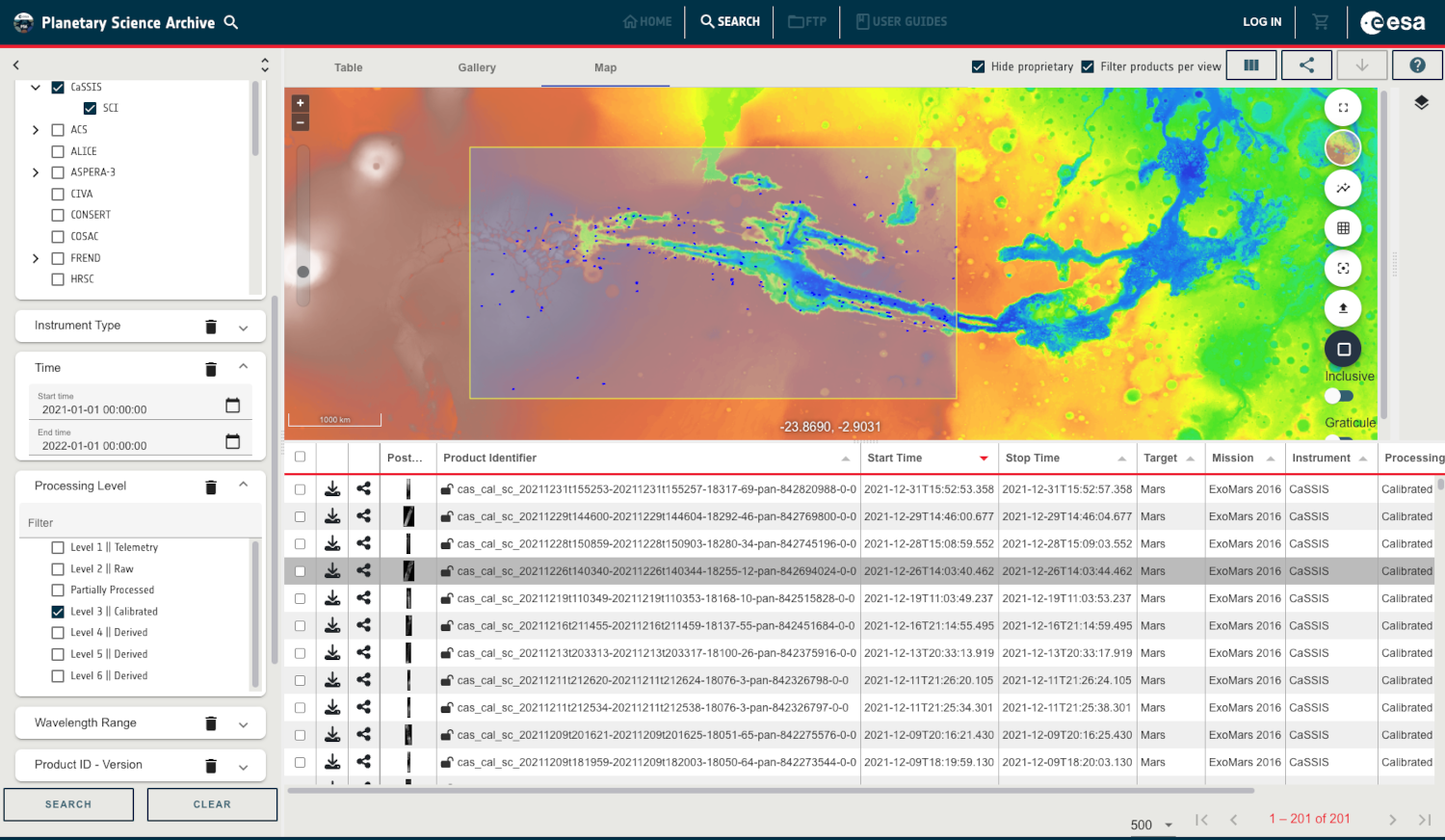ESA's Planetary Science Archive: looking to the future
- 1European Space Agency, ESAC, Madrid, Spain (mark.bentley@esa.int)
- 2Starion Group for ESA, ESAC, Spain
- 3Aurora Technology BV for ESA, ESAC, Spain
- 4Telespazio UK Ltd for ESA, ESAC, Spain
- 5Serco for ESA, ESAC, Spain
Introduction
The Planetary Science Archive (PSA) of the European Space Agency (ESA) has recently released a new user interface and APIs to access ESA's planetary data. These updates, along with data migration activities, aim to keep the mission data relevant and usable over the long term. This is critical when the time between missions to a given body can be decades. [JO1]
PDS3 migration
The PSA currently supports 10 missions ranging from Giotto[JO2] , ESA's earlier deep-space probe in the 1980s, to the JUICE mission to the Jupiter system, launched last year. Early missions, as well as Mars Express - still going strong[JO3] after 20 years, provided data in PDS3 format. Newer missions have adopted PDS4 format and an operational archive approach where data are delivered regularly. This newer format brings many benefits, not the least a standard set of tools to allow users to open any data product. To ensure the longevity of the PDS3 data, an activity to migrate the legacy products has been started this year. This is particularly important to ensure, for example, that data from Venus Express are in the most usable form possible prior to EnVision. The key challenge in this activity is how to maintain data access for users coming from the world of PDS3, with its associated tools and codes, and that of PDS4.
User interface
As a single repository for ESA's planetary data, the PSA has evolved its user interface (UI) over the years, always keeping multi-mission search at its core. Late last year a new version of the UI was released, offering a refreshed and responsive design. New functionality planned for late 2024 is the map-based display and selection of data products at Mercury, in preparation for the arrival of BepiColombo late next year. The figure below shows an example of visualising footprints from the CaSSIS instrument on the ExoMars Trace Gas Orbiter in the most recent version of the PSA. In addition, integration with the ESA Datalabs project is ongoing and support for PDS4 data is being added this year; whilst not yet fully public, this platform allows users to work with PSA data in a browser without having to download it. Finally, for those users who still need to download large amounts of data, a more streamlined approach will be rolled out by serving lists of URLs and pre-baked scripts rather than traditional compressed archives.

Data access
Users have the possibility to download data in several ways, from the UI, from a secure FTP system offering access to both public and private data, and via several APIs. Programmatic download of individual products has long been possible, but the most recent version offers download based on an ADQL query. This means that users can leverage complex criteria to select data which are packaged and downloaded. In addition, ingesting metadata into the PDS registry and API means that users can query on arbitrary metadata and pass the list of returned identifiers to the PSA to retrieve these products.
New missions
Currently the PSA supports 10 planetary missions and over one hundred instruments including remote sensing, in-situ, and laboratory-type instruments. In the coming years we hope to see data from future missions including Rosalind Franklin, HERA, Comet Interceptor, EnVision, PROSPECT and Mars Sample Return. In addition to these missions, a new challenge is the increasing number of payload opportunities on commercial missions, e.g. from the NASA CLPS programme, where data from ESA contributions need to be archived. A training session in November 2024 will give hands-on experience to many of the new data providers in how to produce archive products for the PSA.
Community feedback
The PSA exists first and foremost for the scientific community, and we appreciate your feedback on how things could be improved, missing functionality etc. As well as finding the PSA team at conferences and meetings you can reach out to the PSA Users’ Group who represent your needs also. We would love to hear how we could help you do more with these data, so please get in touch!
How to cite: Bentley, M., Coia, D., Cornet, T., Docasal, R., Grotheer, E., Heather, D., Lim, T., Oliveira, J., Osinde, J., Raga, F., and Saiz, J.: ESA's Planetary Science Archive: looking to the future, Europlanet Science Congress 2024, Berlin, Germany, 8–13 Sep 2024, EPSC2024-868, https://doi.org/10.5194/epsc2024-868, 2024.